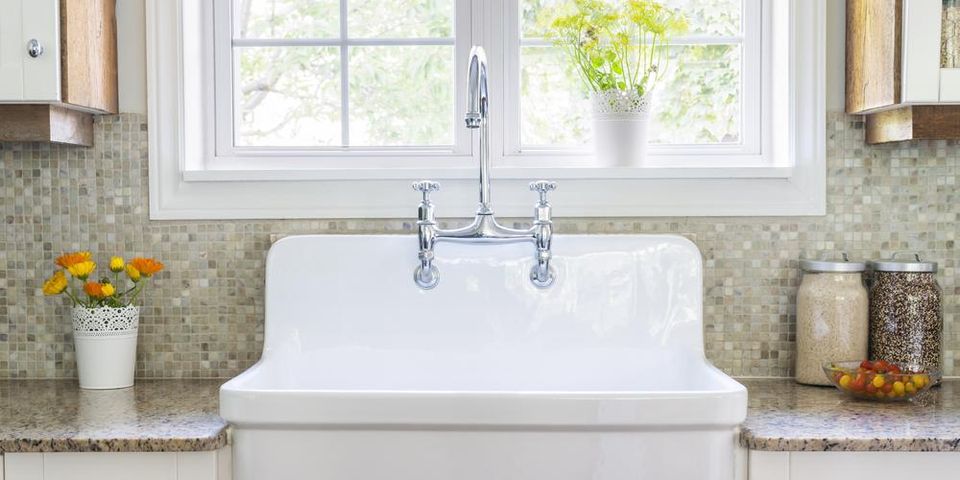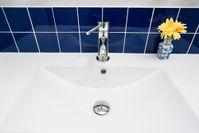Try These 6 Ways to Keep Your Porcelain Sink Sparkling Clean

If you think the most germ-ridden spot in your home is the toilet, think again. Thanks to leftover food particles and soaking dishes, your kitchen’s porcelain sink is a breeding ground for illness-causing bacteria like E. coli and salmonella. Even a sink that appears clean to the naked eye can still carry the risk of disease, which is why learning how to keep it sparkling clean is important.
If it’s been awhile since you’ve disinfected the kitchen sink, or if your bathroom sink hasn’t been pure white in months, there are several ways that you can restore them to their former sparkling glory:
- Start With Soap & Water: Before pulling out the special cleaning formulas, the best way to start cleaning your porcelain sink is to start with soap and water. Use dish soap, warm water, and a sponge to scrub the sides and remove any immediate grime and food debris.
- Use a Disinfectant: Bleach is an excellent disinfectant for porcelain sinks that kills 99.9% of viruses, bacteria, and certain types of mold. Spray your sink with a cleaning product containing bleach, or make your own by combining one part chlorine bleach to nine parts water in a spray bottle. Let the solution sit for a few moments before wiping clean—bleach can be harsh on skin, so wear gloves!
 Keep Your Drain Clog-Free: Does your drain always seem to get clogged? Skip the dangerous household cleaners and clear your pipes naturally by combining one cup of baking soda, one cup of salt, and one-fourth cup of cream of tartar. Every few weeks, pour half a cup of this mixture down the drain, followed by a quart of boiling water. Store this mixture in an airtight container and keep under the sink for easy access!
Keep Your Drain Clog-Free: Does your drain always seem to get clogged? Skip the dangerous household cleaners and clear your pipes naturally by combining one cup of baking soda, one cup of salt, and one-fourth cup of cream of tartar. Every few weeks, pour half a cup of this mixture down the drain, followed by a quart of boiling water. Store this mixture in an airtight container and keep under the sink for easy access!- Remove Stains With Lemon Juice: Does your sink have stubborn yellow stains that don’t seem to go away? Try this easy home remedy: Create a paste using half a cup of powdered borax and the juice from half a lemon. Use a sponge to rub this mixture onto the offending stain, then rinse clean with warm water.
- Eliminate Lime Deposits With Vinegar: Mineral-rich hard water can create lime deposits that are often difficult to clean off—unless you use vinegar. Wrap a paper towel that has been soaked in white distilled or apple cider vinegar around the spot. After 10 minutes, remove the paper towel and buff the spot with a new, dry one. It should disappear right away.
- Repeat Every 30 Uses: The frequency with which you clean your kitchen or bathroom sink depends on how often they are used. As a rule of thumb, sinks should be cleaned after every 30 uses.
For more tips on how to keep your porcelain sink looking like new, turn to Porcelain Glaze in Clinton, CT. These bathroom remodel experts have been rejuvenating chipped and worn bathtubs, refreshing old wall tiles, and refinishing antique tubs for over 30 years. Whether you’re looking for a simple upgrade or a complete overhaul, their highly trained technicians have the training and equipment to design the room of your dreams. View before and after photos of their work online. To learn more about how they can makeover your home, call (860) 669-2576.
About the Business
(3 reviews)
Have a question? Ask the experts!
Send your question

